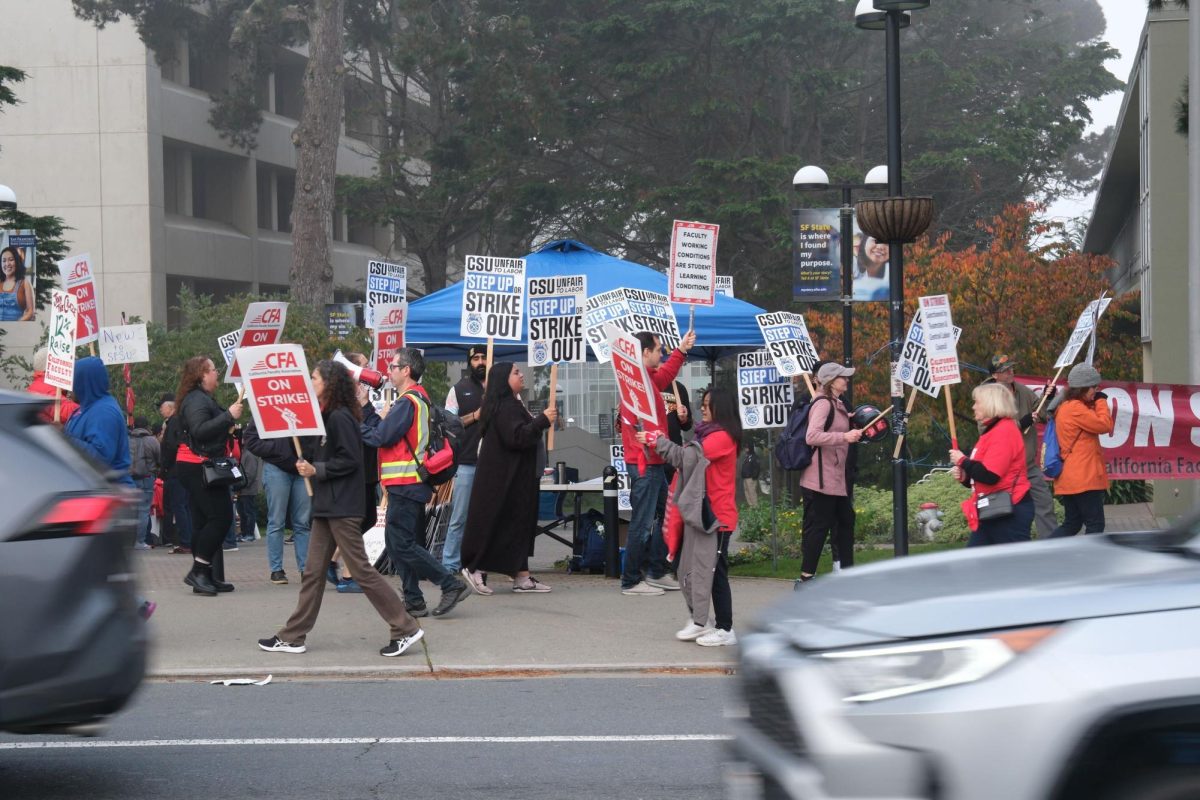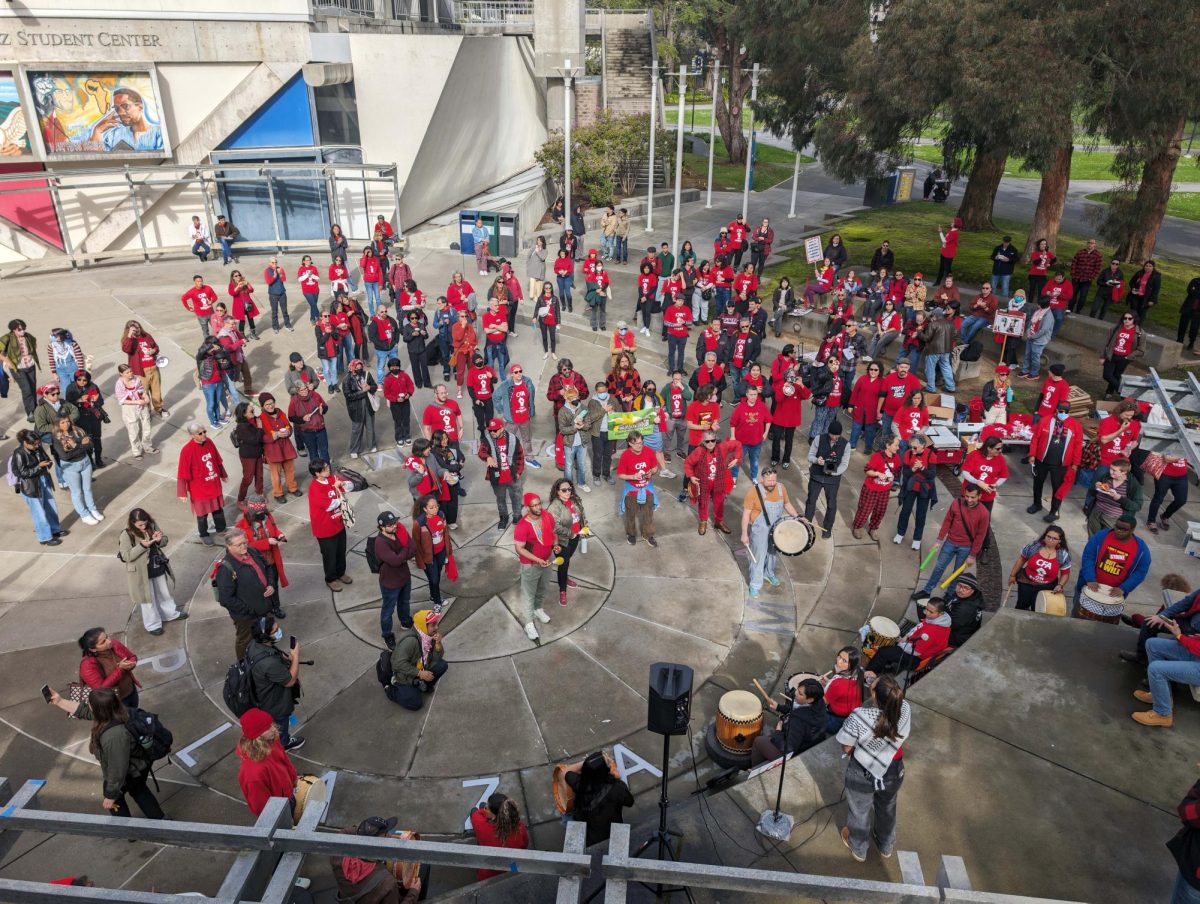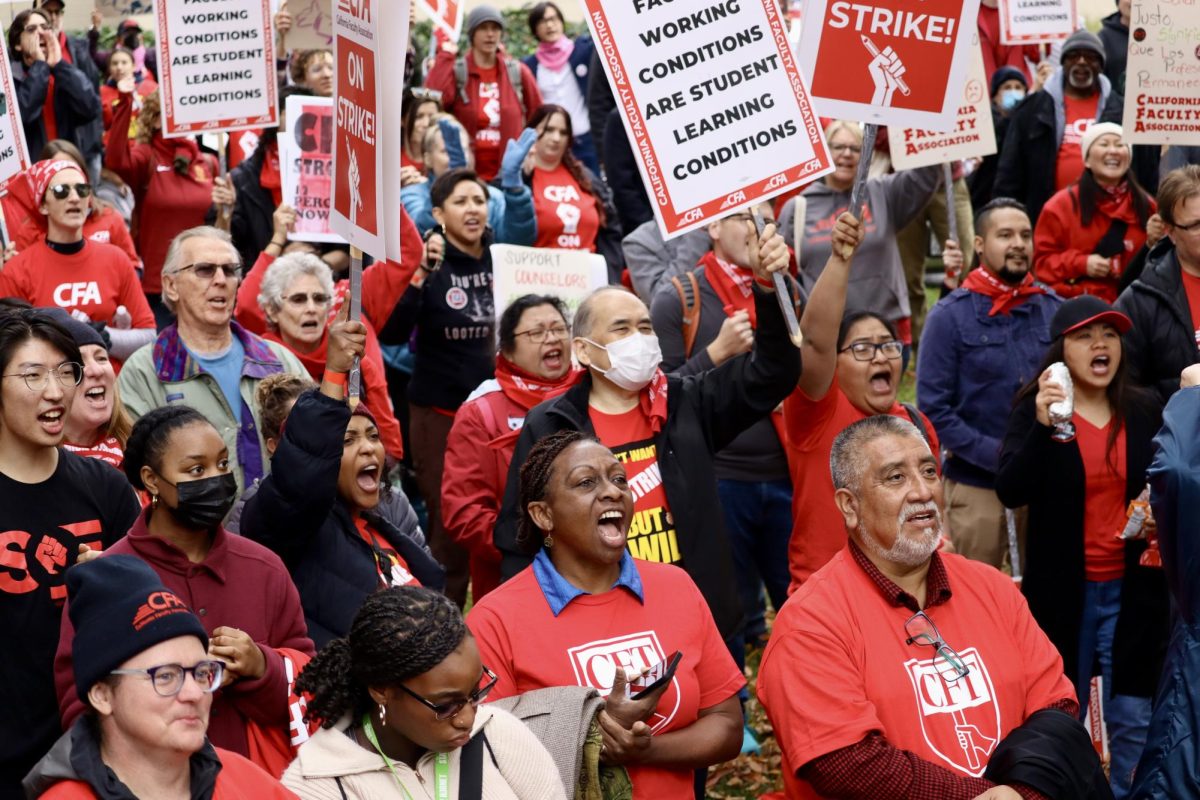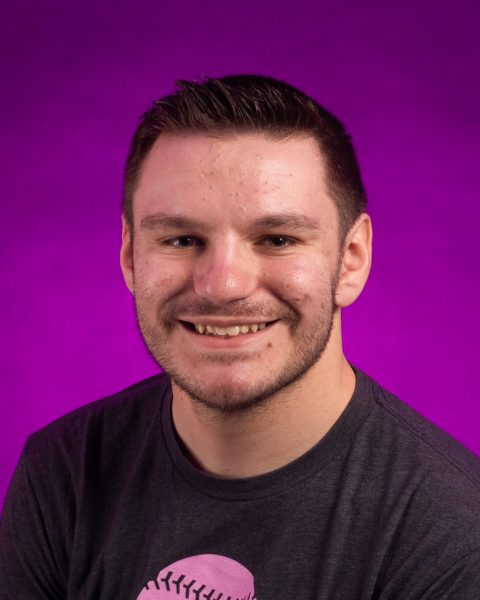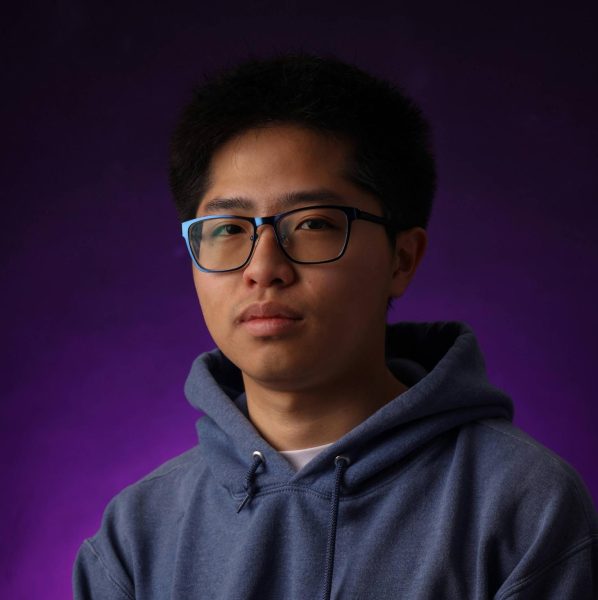Capitulation. Sellout. Mid.
These were among the words used by San Francisco State University faculty and students to describe their overall displeasure with the recent tentative contract agreement reached between the California Faculty Association and the California State University administration, a deal some of them feel lacked substance and depth compared to their original demands.
Negative and confused reactions to the penciled-in treaty have been overwhelmingly present in intense online meetings and passionate social media threads since the tentative agreement was announced late Monday.
The trend continued on Thursday afternoon, as CFA-SFSU packed Malcolm X Plaza to further voice their dissatisfaction. They did so while decked out in a sea of red — a color not just known to act as CFA’s trademark pigment, but also used to symbolize power.
“Picketing is about showing your power but part of where the power comes from is being together in that kind of joyful recognition of your power,” said Teresa Pratt, an assistant professor in the English department at SFSU.
While faculty could no longer legally picket with the presence of a tentative agreement, rally participants who voiced their objections to the agreement on Thursday instead displayed their dismay through creativity and organization to grab the attention of the CSU headquarters in Long Beach and CFA’s home in Sacramento.
No, they didn’t stack a caravan and march members across the bridges and up Interstate 80 or through the grapevine and down Interstate 5. But they did choreograph a formation to make a statement to their leaders.
With roughly 250 people involved, the union supporters collectively formed a human “NO,” officially launching their campaign to strike down the tentative agreement forcefully.
“I loved it,” said Dan Buschmeyer, an SFSU junior and student union organizer. “There were some people who were concerned about how well you could choreograph that many people but I was really impressed to see it. I didn’t know what it’s gonna look like until it finally came to be and I was happy about it. I thought it was a good show.”
CFA members and supporters lined up in a tight, single-file line in the grassy section of the quad, many of whom were carrying bullhorns and drums intending to create the utmost amount of volume. Participation was mixed, from people carrying babies in their arms while filling in the letter “O” to individuals who relied on scooters or walking canes to reach their destination, helping put the finishing touches on the bottom of the “N.”
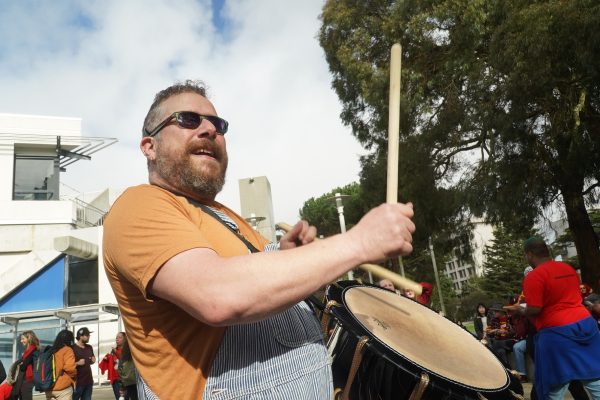
The idea of forming the “NO” was developed at a recent Zoom meeting by Mark Allan Davis, an associate professor in the Africana Studies department at SFSU and theater choreographer.
“When everybody is in the moment, that’s the moment that they’ll never forget,” Davis said. “That’s something that — they owned it. It’s their participation in something creative and that’s what I was thinking of.”
Davis’ mind was inspired by famous Coca-Cola advertisements and Wrapped Reichstag, a Berlin-based artwork created by Christo and Jeanne-Claude in the 1990s.
“I’ve worked on feature films where you have to stage people doing something, specifically at one moment, and then get them from point A to point B,” Davis said. “People don’t understand that it’s choreography and moving bodies in time and space. And I’m a master at it.”
Capitulation was the word Buschmeyer used to describe the tentative agreement.
“They [CFA] capitulated to demands that were previously offered, even though they had an opportunity in their hands being on strike to get a better agreement than they had,” Buschmeyer said. “They squandered their potential of having a week-long strike because the CFA Board of Directors seemed to lack faith that their union members were able to sustain a week-long strike.”
As a student leader, Buschmeyer has been one of the masterminds responsible for organizing student participation in walk-outs, rolling strikes and — most notably — the rally last fall against the CSU’s decision to impose a tuition hike.
The act of community organizing, or even involvement, hasn’t always come naturally for Buschmeyer. In his early years at SFSU, he would commute an hour and ten minutes from Berkeley, bypass the students tabling for clubs, attend his international relations class and immediately embark back home to the East Bay.
Like many students, his mindset couldn’t escape from the vision of only being on campus to earn a degree — the absolute bare minimum.
“I never expected to get so organized on campus, but for the past two months, I see people who have been here for over 30 years losing their jobs and it’s impossible not to care,” Buschmeyer said.
Buschmeyer says he immersed himself in the “NO” formation outline because the better the faculty is paid, the more secure they feel with their jobs — a recipe for the students to enjoy a healthier education.
Ellen Murray best described her overall thoughts on the agreement struck between the CFA and CSU using the term “sellout.”
Murray, a seasoned veteran of labor movements, was a student voice during the SFSU strike in 1968, a movement that ultimately led to the establishment of the first Black Studies department in U.S. history. Now, over five and a half decades removed from the historic push, she’s found herself back in the loop regarding the recent labor happenings on campus.
“I’ve read some things in the mass media about the negotiations, but they don’t do justice,” Murray said. “My reason for being here is twofold: one, clearly to support the no vote because my experience in unions is they sell you out and two, to build the consciousness around what is in my sign, which is that this whole system is set up to support imperialism again.”
The sign Murray crafted for the event had a direct message that read “U.$. Imperialism + Zioni$t Genocide = no money for education.” The fight for the students, she says, was among the reasons she joined the human “NO.”
“I think the good thing about this fight against the contract is that it is saying we didn’t build the proper unity around the most marginalized people like the lecturers, the students, to fight against their tuition hike, and we didn’t build the kind of working-class unity that you’re going to need to fight back,” Murray said.
Pratt’s one word to describe the tentative agreement fits well with the modern-day slang used by many of the students she teaches.
“It’s just mid,” she said.
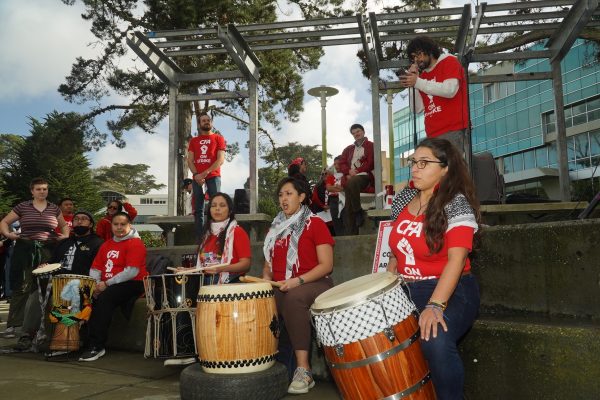
Pratt started at SFSU in January 2020, six weeks before the COVID-19 pandemic caused a system of shockwaves and challenges for faculty and students. During the time of uncertainty, Pratt’s personal and physical relationships that she values so highly suddenly became stale from inactivity. She says being together with the campus community has been the most important aspect of the journey to a fair contract.
“We’ve built these connections with each other,” Pratt said. “We wanted to be on the picket lines together and this was our chance to do that in the absence of the strike that we thought we’d be doing all week.”
One of the reasons Pratt proudly involved herself in the human “NO” to support her former lecturer colleagues who recently saw themselves out of a job following the several faculty cuts happening around SFSU. She says it’s only another example of much of the fight being about morale and emotion.
“In a personal sense, I’m like everyone else,” Pratt said. “I’m trying to pay my rent and groceries are way more expensive. I would like to go on a vacation sometime — that would be cool. I went on one this month and I’m still like, ‘How am I going to pay this off?’ It’s absolutely personal and It’s more that I know how much everyone else is struggling and that shapes how we interact and shapes what we need from each other — how we need to support each other.”
Following a few dozen minutes of chants and noise, participants disbanded from the human “NO” and scattered to debrief. They shared pizza and long, unfiltered thoughts on the future, a continuation of the growing relationship built in the recent months of labor discussion.
“That was my goodbye to my professors at the end of last semester,” Buschmeyer said. “Like, ‘Well, I won’t see you in class again, but I’ll see you on the picket line.’ It’s been good to actually know these people. I feel so much more connected to this campus than at other campuses I’ve been on and it’s just been a wonderful experience.”








